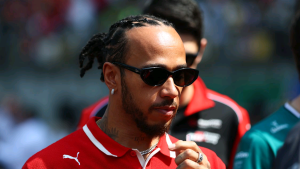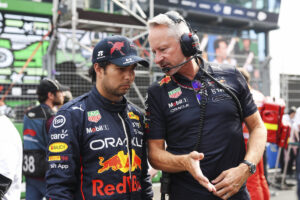
Brundle names his problem with Lewis Hamilton’s car
Driver Safety in Formula One: Martin Brundle’s Perspective
Driver safety has become a crucial focus in modern Formula One, with significant changes made to protect drivers from potential crashes and injuries. Former F1 driver and current pundit Martin Brundle recently experienced firsthand how safety innovations have transformed the sport. Despite his understanding of the need for these advancements, Brundle admitted feeling less safe when he sat in one of Lewis Hamilton’s recent Mercedes cars.
Feeling “Trapped” in Hamilton’s Car
During a Reddit AMA hosted by Sky Sports, Brundle shared his thoughts on the current safety measures in Formula One, particularly after driving Hamilton’s Mercedes. “I recently drove one of Lewis Hamilton’s Mercedes and you’re buried inside the car with the halo and the headdress and the HANS device around your neck,” Brundle explained. “I didn’t actually feel particularly safe, I felt more trapped.”
The combination of safety devices such as the Halo, which protects the driver’s head from debris, and the HANS (Head and Neck Support) device, which reduces the risk of neck injuries in crashes, has made F1 cars much safer. However, Brundle’s comments highlight a different aspect of driver experience: the feeling of being confined. This contrasts with older F1 cars, where visibility was greater but the risk of injury in a crash was much higher.
Comparing Eras: Brundle’s Career and Safety Evolution
Martin Brundle, who competed in 165 F1 races between 1984 and 1996, drove for top teams like Benetton and McLaren. Over the course of his career, he stood on the podium nine times. Reflecting on his driving days, Brundle remarked on the stark differences between cars from his era and the modern vehicles.
“I’ve driven, for example, in Senna’s beautiful black and gold Lotus Renault turbo. And it’s wonderful because you can see everything in front of you, but it’s not very safe,” Brundle recalled. He mentioned that during his time, crashes almost inevitably resulted in injuries like broken feet, ankles, or legs, and he experienced such injuries himself. Back then, safety was not as advanced as today, and while the cars were visually open and exciting, they left drivers more exposed to harm.
Brundle Aligns with Hamilton’s Concerns
Lewis Hamilton, a seven-time world champion, has voiced similar concerns about the seating position in his car. Hamilton, like Brundle, has found it difficult to adjust to the way modern F1 cars are designed, particularly with the newer, longer vehicles.
Brundle echoed these sentiments, pointing out that the size of today’s cars resembles those he drove in Le Mans rather than the smaller F1 cars of the 1980s and 1990s. “The cars are so long… They’re probably more akin to the cars I raced in Le Mans,” Brundle said. He also noted how critical elements like the pedals, steering wheel, and feedback from the car contribute to a driver’s overall experience and comfort.
Conclusion: A Balance Between Safety and Driver Comfort
While Brundle acknowledges the importance of safety features, his remarks reflect the ongoing conversation about balancing protection with the feeling of control and comfort inside the car. Modern F1 cars are much safer than their predecessors, but for veteran drivers like Brundle, adapting to this new era can feel restrictive. Despite the challenges posed by evolving car designs, safety innovations like the Halo and HANS device have undoubtedly saved lives, and this trade-off between safety and comfort remains a key focus for F1 teams and drivers alike.








